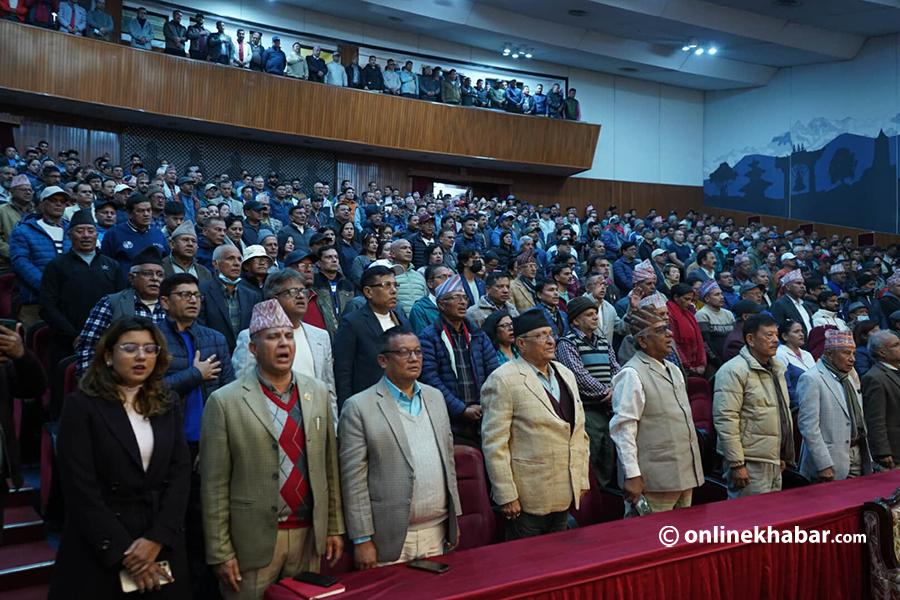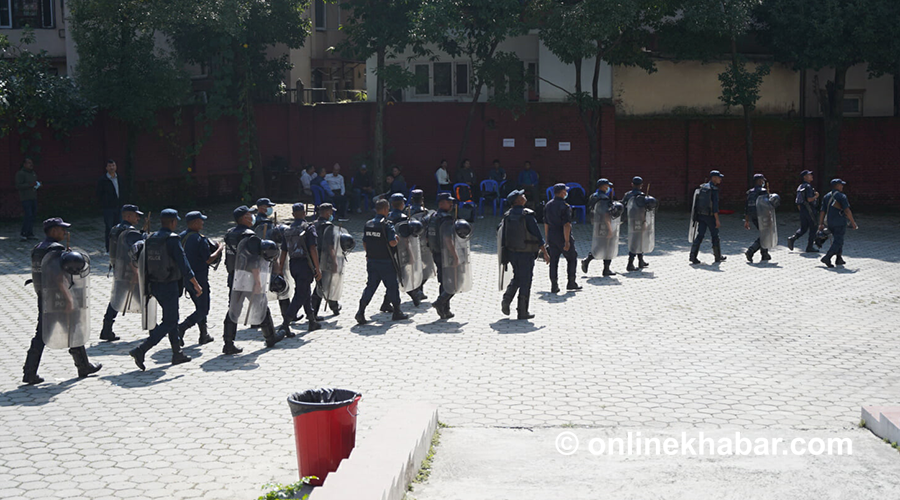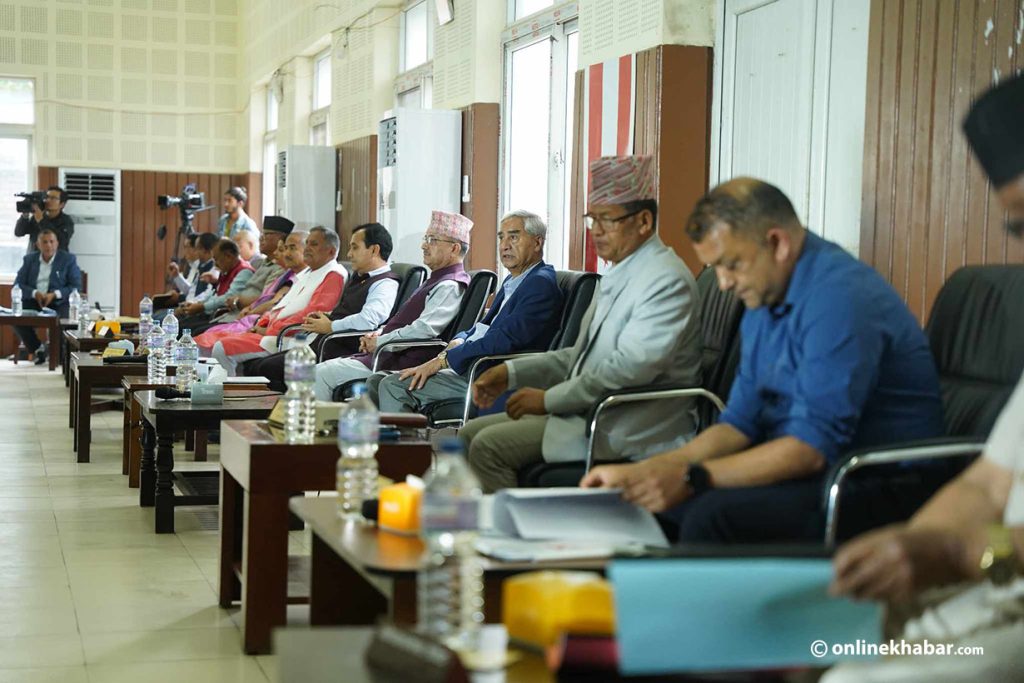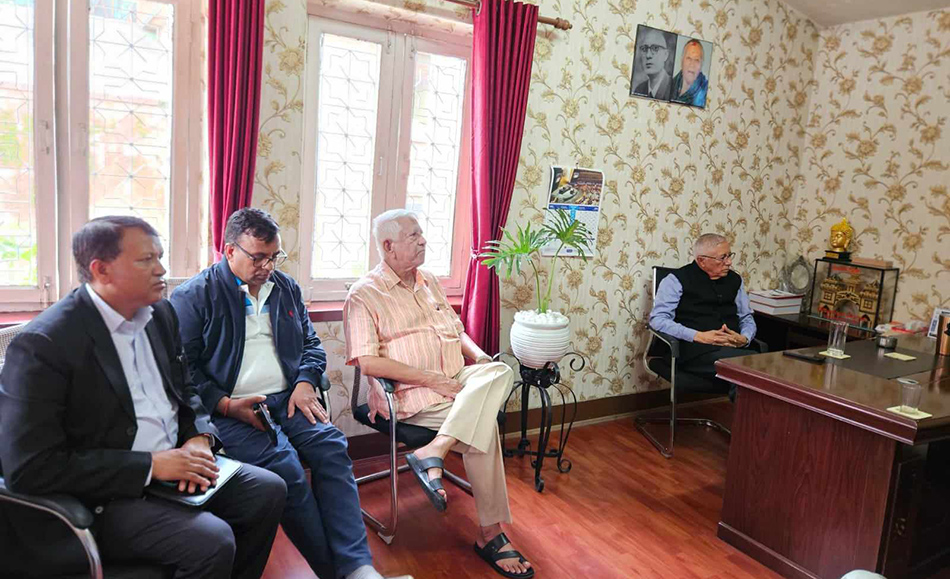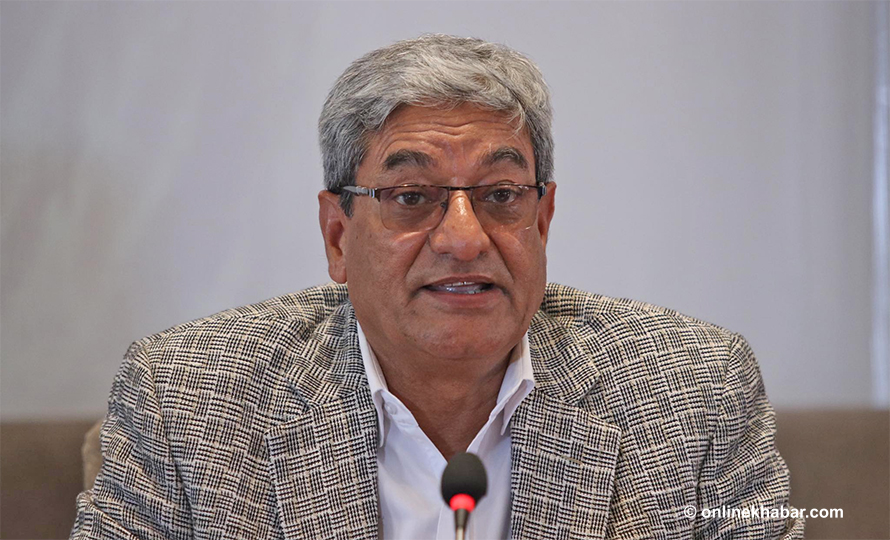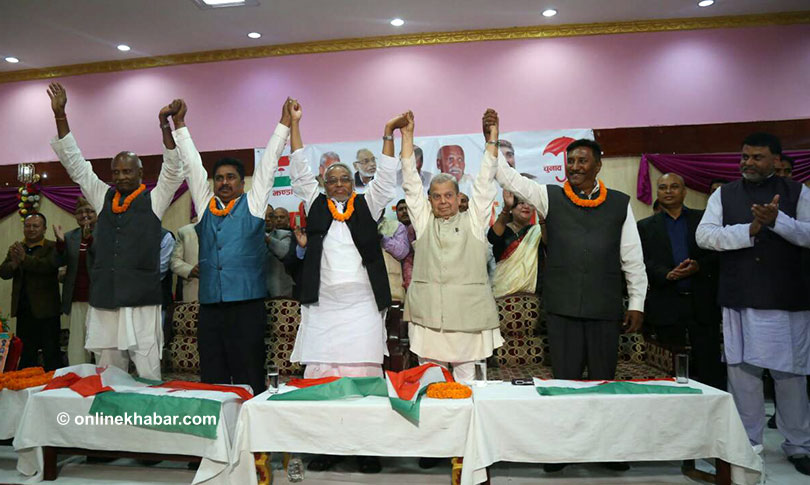
If the results of the upcoming parliamentary elections, scheduled for November, will be different from the 2017 elections in any way, they will be most deeply felt in the Madhesh province which includes eight districts of Nepal’s southeast.
Even though there are some promising independent candidates, the main competition, across the country, is likely to be against the two major coalitions: one led by the Nepali Congress and the other by CPN-UML.
The Nepali Congress-led coalition includes the Maoist Centre, CPN-Unified Socialist, Loktantrik Samajbadi Party and Rastriya Janamorcha. The CPN-UML-led coalition on the other hand has Janata Samajbadi Party, Rastriya Prajatantra Party (RPP) and RPP-Nepal (Kamal Thapa).
So, unlike the last elections, Nepal will see a battle between the two major political forces in the Madhesh province also. In 2017, things were different as the partnership between the Federal Socialist Forum (FSFN) and Rastriya Janata Party Nepal (RJPN), led by Upendra Yadav and Mahantha Thakur respectively, meant there were three alliances in the Madhesh province, and the results were in favour of the Madheshi alliance.
The FSFN-RJPN coalition, despite facing stiff competition from the then UML-Maoist Centre alliance and Nepali Congress, won the highest number of seats in the Madhesh province, shocking both parties. But, this year, two major Madhesh-centric forces–Upendra Yadav’s Janata Samajbadi Party Nepal (JSPN) and Mahantha Thakur’s Loktantrik Samajbadi Party (LSP)–have sought help from the two major coalitions. This has given a bad message as these parties, which went toe-to-toe with major forces, seem to have given up.
The paradigm shift

Political analyst Chandrakishore says major political parties have never liked Madheshi parties being a major force and have tried to decrease their influence in the Madhesh province time and again.
“It seems they’ve finally been successful in doing so as I know for a fact they haven’t liked these parties being an alternative force,” says Chandrakishore.
And, he is right. This is the first time since the 1999 elections that the major political parties have established themselves in the Madesh province. In between, the scene was dominated by different Madhesh-centric political parties as most of them came to rise in the first Constituent Assembly elections in 2008. After that, parties like Nepali Congress and the CPN-UML were almost ineffective in the region.
The rise of Madheshi regional forces was also important for the constitution as many essential features in the charter were added thanks to the pressure and perseverance of these parties. But, now, as Madheshi leaders are not on the same page, major political parties’ presence is back in Madhesh province after a hiatus of 24 years.
The two parties, JSPN and LSP, recently even switched their sides on the eve of the candidate registration. The JSPN was part of the Sher Bahadur Deuba-led government. But, after a dispute about the seats, its leaders decided to leave the Nepali Congress-led coalition and joined hands with the CPN-UML. On the contrary, the LSP, which was trying to work with the CPN-UML, joined hands with the ruling alliance.
This is bad news for them as they are likely to get fewer seats in this round of elections compared to 2017 as the LSP has been promised just eight House of Representatives seats while the JSPN has been promised 17. In the 2017 elections, the two parties together got 19 seats from the Madhesh province alone.
“This should be seen as a victory for the establishment that failed to meet the demands of the Madheshis during the drafting of the constitution. I think this shows how Madheshi leaders have failed badly,” says Chandrakishore, who feels the identity that Madheshi parties had created after a long struggle has now vanished.
The rising action
It took a lot of effort for Madheshi leaders to stand up against the establishment. It was like the people standing up to the autocratic Rana regime.
As the Rana regime ended, people like Raghunath Thakur, Bedananda Jha, Durgananda Jha, Raghunath Raya Yadav and Satya Dev Mani Tripathi tried to raise issues that were plaguing the people of Madhesh. They even announced a Madhesh Mukti Andolan and demanded the state listen to the issues of the people of Madhesh.
Bedananda Jha even formed a Terai Congress to raise demands such as people from Madhesh get employed as civil servants, the Hindi language be recognised by the state and Madhesh be an autonomous state.
The Terai Congress took part in the 1959 elections in the country but none of its leaders won; it did get 0.07 of the total votes. But, once the Panchayat system was put in place by King Mahendra, things started to take an ugly turn.
In 1963, Durga Nanda Jha, in revolt against the system, exploded a bomb in Janakpur. After the state found out, Durga Nanda along with the people who helped him–Ramji Mishra, Raghunath Raya Yadav and Satya Dev Mani Tripathi–were killed.
But, that did not stop people from today’s Madhesh province from questioning. People kept on pushing for change. When a referendum was held on May 3, 1979, a lot of people voted for Nepal to become a multi-party democracy.
Madhesh was once again unhappy when Harka Gurung prepared a report in 1983 that stated that a lot of Indians had settled in Nepal, particularly in Madhesh. Ram Janam Tiwari, Gajendra Narayan Singh, and Ram Chandra Mishra formed Nepal Sadbhawana Parishad and wrote to the king stating this was wrong.
After the establishment of multiparty democracy in 1990, Nepal Sadbhawana Party was formed under the leadership of Gajendra Narayan Singh, Badri Prasad Mandal and Hridayesh Tripathi. Following that, the voices of the people of Madhesh started to reach Kathmandu on a regular basis.
But, despite this, Nepali Congress and CPN-UML dominated the political scene in the Madhesh province as the Sadbhawana Party only won six seats in the 1991 elections. In 1994, it won three seats and in 1999, it won five seats.
The reason why it did not do well in the elections was the internal politics within the party and its failure to make public its agenda at the national level.
The climax
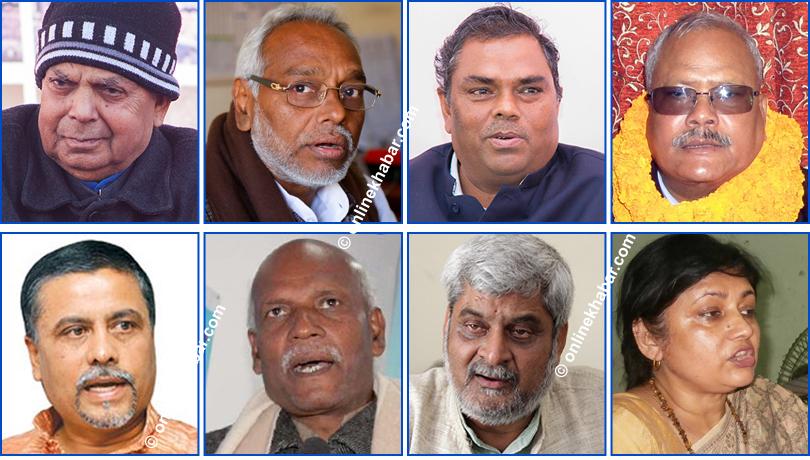
After the monarchy was overthrown in 2008, the Madhesh province then continued to try to find its identity in Nepali politics. Upendra Yadav came to rise with the Madeshi Andolan. The protest started a new wave in Madheshi politics as more political parties were formed as a result to contest the 2008 elections.
Leaders quitting major parties and wanting to put Madhesh first formed the Terai Madhesh Loktantrik Party on December 27, 2007. All key Madheshi leaders like Manhantha Thakur, Hridayesh Tripathi, Brishesh Chandra Lal, Mahindra Raya Yadav, Ram Chandra Yadav and Jitendra Sonal joined the party.
Sadbhawana Party continued to exist, but there were internal disputes within the party. Despite all that, the Madeshi parties stamped their authority in the 2008 elections as major parties failed to do anything there. Besides the Madhesh province, the parties even won seats in today’s Province 1, Lumbini and Sudurpaschim.
The 2008 elections, to this day, hold a special place in the heart of the Madheshis as they won 87 seats. Thanks to the movement, Ram Baran Yadav, a Madheshi, became the country’s first president.
The falling action
But, what happened then was most of these leaders became power-hungry. With all of them wanting power, the parties started to spilt.
The Madheshi Janaadhikar Forum Nepal, which was the fourth biggest force in Nepali politics and the biggest in the Madhesh province in 2008, split in 2010. Bijaya Kumar Gachhadar played a major role in splitting the Upendra Yadav-led party and joined the Madhav Kumar Nepal-led government. By 2017, Gachhadar packed his bags and joined Nepali Congress, when he had come from.
After that, the Madheshi parties continued to split.
The first Constituent Assembly failed to draft the constitution and the Madheshi parties had to pay the price for it as Madhesh-centric parties only won 12 seats in the second Constituent Assembly elections in 2013. This was mostly because of a lack of coordination.
The constitution was then drafted, but Madhesh was not happy. But the major parties did not care and went ahead which resulted in multiple protests in the region. People died and the country underwent a six-month-long blockade.
The leaders knew that the reason they were not taken seriously by the establishment was that they were divided. In order not to be bullied, they decided to contest the 2017 elections in the Madhesh province as one.
The Rastriya Janata Party and the Federal Socialist Forum worked together to contest the elections and won 19 seats compared to 13 by Nepali Congress, Maoists and the UML combined.
They dominated the provincial elections too as they won 44 seats and formed the provincial government. Even though the Nepal Communist Party had the provincial government everywhere else, in the Madhesh province, it could not lay a glove.
The RJP and FSFN merged to form the Janata Samajbadi Party Nepal. By early 2020, the JSPN had 34 lawmakers in the House of Representatives.
But, KP Sharma Oli’s decision to dissolve the House created issues within the JSP. When Oli dissolved the House on December 20, 2020, Upendra Yadav protested and stood against him despite being in the coalition. But, people like Mahantha Thakur and Rajendra Mahato did not speak out against Oli, which was seen as silent support. That created a further divide in the JSPN, the biggest player in the Madhesh province.
Oli dissolved the House again on May 21, 2021. By this time, the JSPN was already politically divided. Upendra Yadav, wanting to save the House, signed a document to make Sher Bahadur Deuba the new prime minister. But, Thakur and others did not sign and instead said they will support Oli.
Following that, the JSPN split. Both parties tried to claim the JSPN was theirs and wrote to the Election Commission. The commission decided in favour of Upendra Yadav.
After that Deuba also brought an Ordinance on Political Parties, which helped Thakur form LSP. This difference meant the two major political leaders do not work together in the elections, which has given the Nepali Congress and the CPN-UML a chance to take control of the Madhesh province.
“We didn’t want to join this coalition, but sadly, the circumstances are unavoidable,” says a leader from the JSPN. “But, this doesn’t mean the Madhesh movement was a failure. The fight goes on.”
This story was translated from the original Nepali version and edited for clarity and length.






